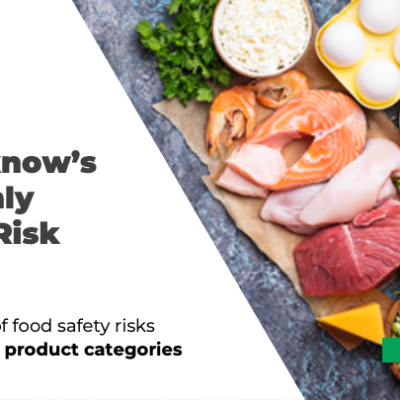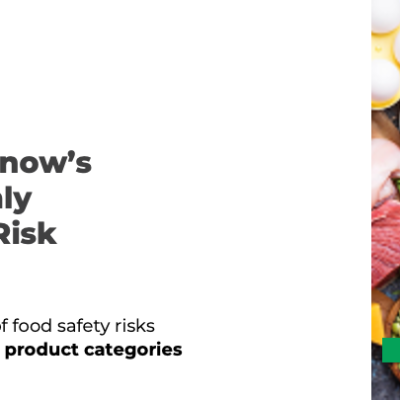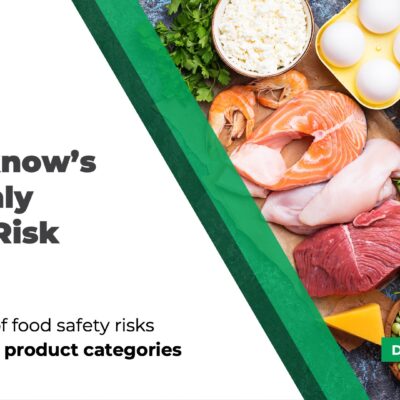
Travel restrictions & supplier audits: How to perform a remote assessment

With restrictions applied in a large number of countries, the Food Safety and Quality Assurance (FSQA) experts face a very important challenge: how to assess suppliers and facilities now that they cannot travel to conduct audits. Until today the onsite audits were the most important supplier verification activity.
Travel bans affecting the supply chain in several ways are today the main concern of experts according to recent research.
In light of the developing global situation, the Global Food Safety Initiative (GFSI) announced that it is exploring together with the Certification Program Owners the conduction of remote and virtual audits.
But how can a virtual and remote audit be conducted? How can information and communication technology help? What kind of information and data do I need beforehand to be well-prepared for such a remote audit? How can I assess risk using all the food safety records and global insights? Let’s first see what was the response to this situation of the Certification Program Owners and Authorities.
RESPONSE BY CERTIFICATION PROGRAMME OWNERS AND NATIONAL AUTHORITIES
Organizations that own the most important food safety standards like the BRC have already published revised guidance that allows remote audits. According to the guidance, remote audits shall include live video checks of the manufacturing process, fabrication, and hygiene of the site. This shall include a discussion with relevant personnel from the site. In addition to that, the remote audit should include a traceability challenge, the challenge of key procedures, and challenges of specific aspects of concern identified through a review of the self-assessment. The use of remote technology shall ensure that adequate controls are in place to avoid abuses that could compromise the integrity of the audit process.
International Featured Standards (IFS) announced that since during coronavirus times onsite audits are not possible, a remote surveillance check can be applied. The check is only applicable to IFS-certified companies and can only be conducted by the certification body that issued the last certificate.
European Commission announced the implementation of the regulation (EU) 2020/466 of 30 March 2020 on temporary measures to contain risks to human, animal, and plant health and animal welfare during certain serious disruptions of Member States’ control systems due to coronavirus disease. The temporary measures foresee the submission of the certification and attestation in electronic format through the TRACE system.
The FDA issued a temporary policy for the onsite audits of food facilities during the coronavirus (COVID-19). The policy was issued to minimize disruptions in the supply chain now that the demand for some food products is high. The policy is temporarily not enforcing onsite audits. Without having the onsite audits as the main tool, companies need to be based on the Food Safety Plans and other verification activities like sampling, testing, or review of food safety records. As mentioned in the policy:
“Alternative methods need to be defined to provide sufficient assurance that hazards have been significantly minimized or prevented during the period of onsite audit delay.”
It’s now maybe more important than ever before, to know all the potential hazards and to monitor them continuously remotely. What kind of information and data do I need to identify the hazards? Which are the steps for the risk assessment that will complement a remote audit and will ensure that hazards will be significantly minimized?

HOW SUPPLIER'S RISK CAN BE ASSESSED REMOTELY USING GLOBAL FOOD SAFETY INSIGHTS
A systematic risk assessment supported by all the global insights can ensure the highest effectiveness of a remote audit. Such a remote risk assessment can include the following steps.
Step 1: Create a list with all the ingredients and raw materials that the supplier is using.
Step 2: Use reports published by food safety authorities (FDA, EFSA, Food Standards Australian) and bibliographic databases (PubMed, AGRIS) to identify known biological, physical, and chemical hazards and fraud for all these ingredients. Focus on the risk of each region to identify risks for sourcing countries like the increased chemical contamination in fruits and vegetables. You can document the main hazards per ingredient in a spreadsheet.
Step 3: Use search engines (Google, Bing, Yandex, Baidu) and National Authorities’ databases like the FDA Import Alerts and FDA Import Refusals, FDA Inspections, to check if the supplier was previously involved in a recall or border rejection. Study if the reported incidents were for chemical, biological, physical, and fraud issues. Document the results in the spreadsheet that you have created in step 2.
Step 4: After collecting all this information, analyze all the hazards and rank the risk using an approach that takes into account the severity of the hazard and the frequency of the incidents. Several tools for risk analysis and corresponding bibliography can be found using metadatabases like the https://www.foodrisk.org/ and some of them are available at the website of international organizations like the Food and Agriculture Organization of United Nations (http://www.fao.org/food-safety/resources/tools/details/en/c/1191489/).
Step 5: Having all the information about potential risks, ask for an updated Food Safety Plan from the supplier for all the ingredients used in the products that you are buying. Also, ask for full traceability records of all the ingredients used in the products that you are buying and focus on the origin of the ingredients and raw materials.
Step 6: Cross-check the food safety plan with the hazards that you have documented and analyzed in the spreadsheet. Identify gaps in terms of hazards and fraud issues and missing corrective actions. Ask for a response on these points plus the mitigation plans for all the recalls, border rejections, and inspections with negative outcomes that you have identified.
Step 7: Arrange a virtual call with the FSQA team of the supplier to discuss details about the hazards and the mitigation steps.
Collecting all the required information, organizing it in a spreadsheet, analyzing all the hazards, estimating the risk, and creating a report from the findings is a time-consuming and error-prone process. With all the new challenges that an FSQA expert is currently facing due to the coronavirus (COVID-19), spending extra time is not possible.
Today, such a process can be highly facilitated using digital platforms that provide insights into all potential hazards and allows the generation of risk reports based on data collected from a large number of National Authorities from all around the globe. A deep hazards analysis, the supplier check, and the risk estimation can be performed efficiently and in a few minutes.






